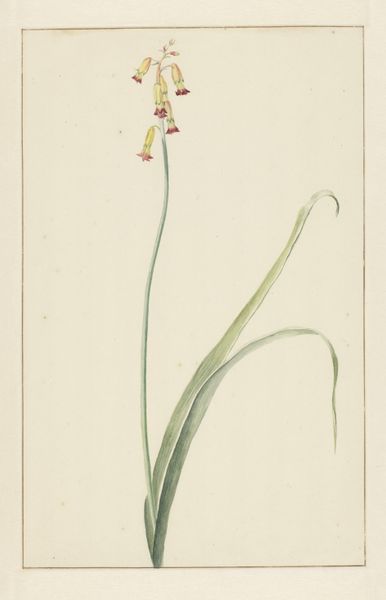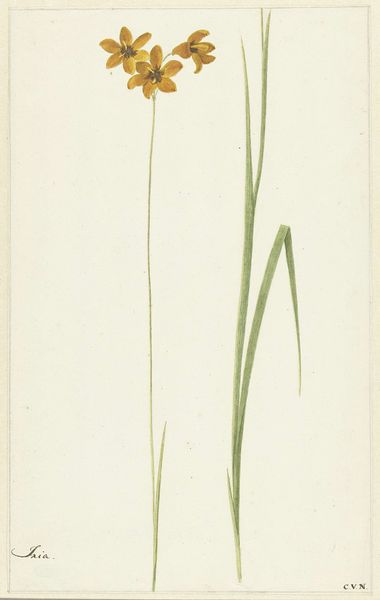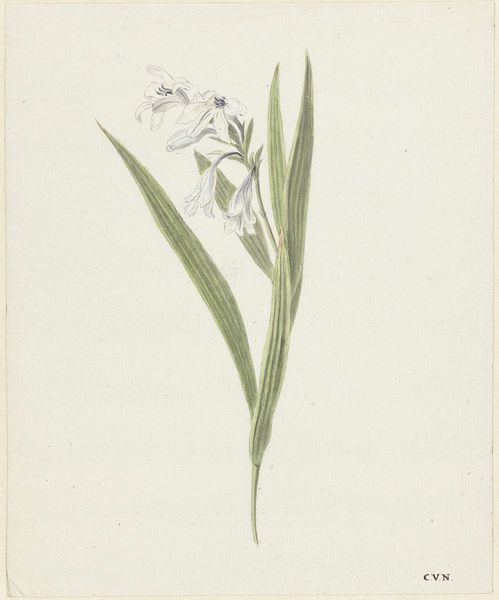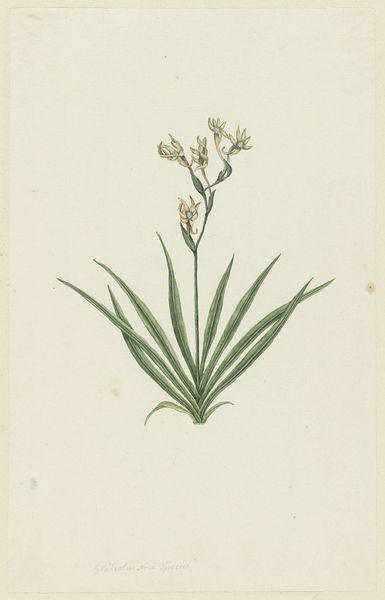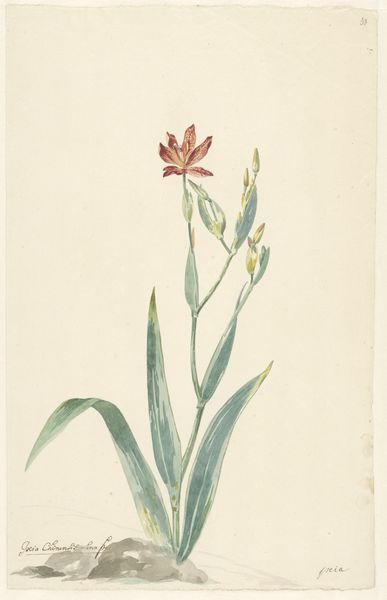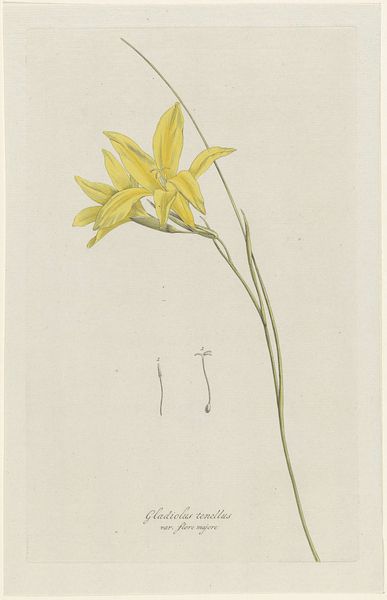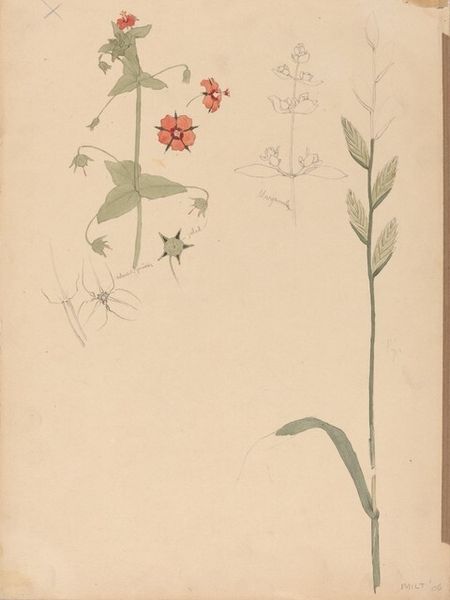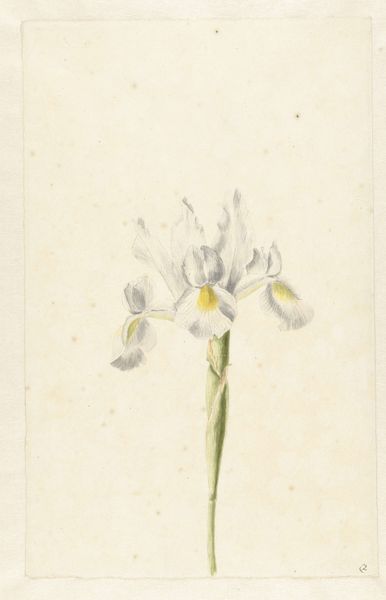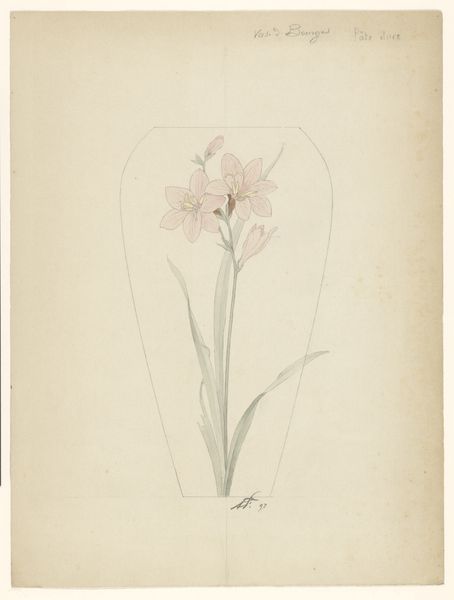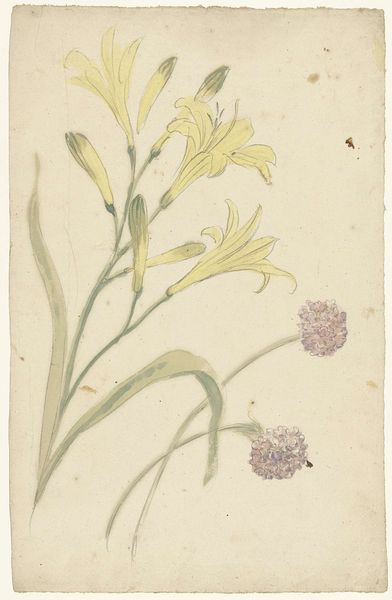
drawing, painting, watercolor
#
drawing
#
painting
#
watercolor
#
line
#
watercolour illustration
#
watercolor
#
realism
Dimensions: height 331 mm, width 211 mm
Copyright: Rijks Museum: Open Domain
Curator: What a delicate depiction of the Iris flower. Cornelis van Noorde rendered this work, dating from the latter half of the 18th century, employing watercolor and drawing techniques. It currently resides here at the Rijksmuseum. Editor: My first impression is of simple elegance. It has such a pure quality with the focused precision and light palette. It almost looks like a page from a botanical study. Curator: That's a astute observation. Botanical studies during this era were instrumental to burgeoning scientific advancements, specifically in trade and medicine, reflecting a wider interest in classifying and understanding the natural world. Works like this contributed significantly. Editor: The iris, as a symbol, is so rich isn't it? I think of its associations with royalty and courage in some cultures. But here, van Noorde’s gentle, understated lines give it such vulnerability. Is that intentional or merely representational? Curator: It’s tough to say conclusively about artistic intention. But looking at van Noorde’s placement of the flower, so central and isolated, we cannot divorce his representation of this Iris from the broader cultural context of botanical illustration and natural science at the time. How did these illustrations facilitate colonial projects and shape our understanding of non-Western environments? Editor: So it makes you wonder what sort of message or understanding was spread along with the work itself. Curator: Precisely. Perhaps he subtly critiques or reinforces prevailing attitudes toward the natural world through careful detail, which in turn might be co-opted as symbolic leverage in culture at the time. We're also reminded of how even scientific-looking illustrations could have shaped, and arguably misshaped perceptions during this epoch of intellectual and colonial growth. Editor: Indeed, every detail likely carries multiple layers. This brief exchange helps to re-evaluate the power and resonance contained within this deceptively modest artwork. Curator: Agreed, a dialogue well worth engaging, because at the core of studying art lies an ongoing, crucial examination of historical contexts and aesthetic impacts.
Comments
No comments
Be the first to comment and join the conversation on the ultimate creative platform.
